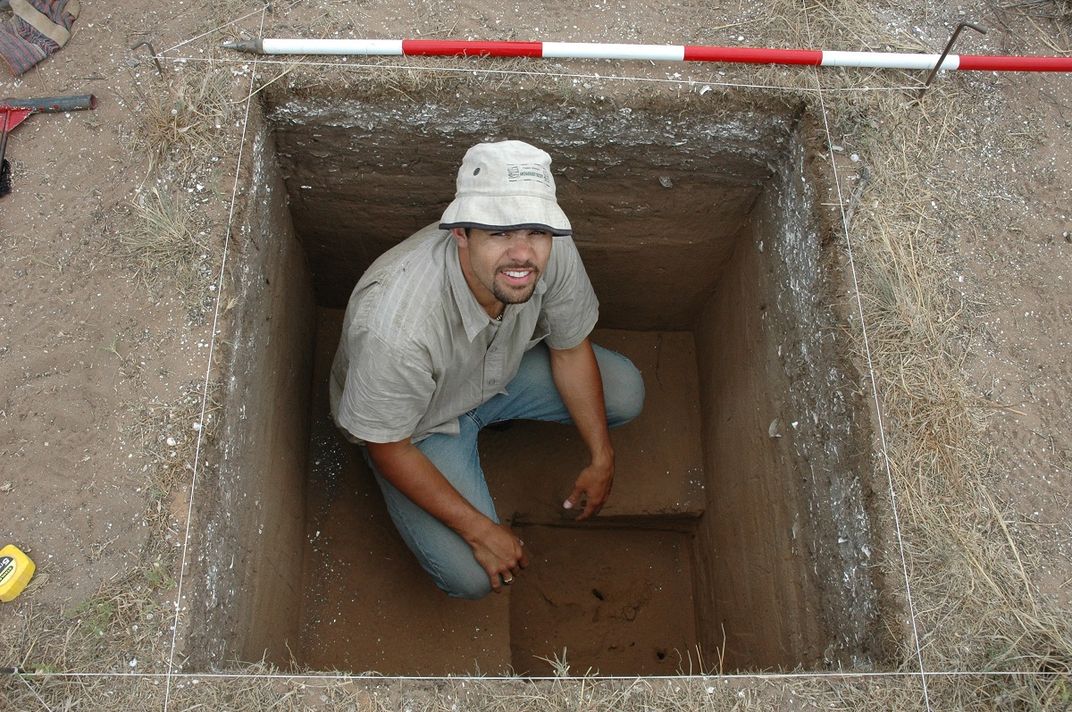Rare Ancient Tool Found in Australia May Have Been Made With Kangaroo Bone
The rare find is helping archaeologists piece together Indigenous technologies used thousands of years ago
/https://tf-cmsv2-smithsonianmag-media.s3.amazonaws.com/filer/fd/eb/fdeb669a-3321-44e7-a10e-a435b6c6b4ba/macropod-bone-point.jpg)
The unusual discovery of a bone tool created by Indigenous Australian people thousands of years ago sheds new light on the technology of the time, archeologists say.
The bone probably belonged to a macropod—a kangaroo, wallaby or related type of marsupial, Australian Broadcasting Company’s Anita Ward reports. A team from Flinders and Griffith Universities, working with the Ngarrindjeri Aboriginal Corporation, found the tiny, slightly broken, tool along the Lower Murray river system in South Australia in a refuse heap that was excavated in 2008. They’ve now analyzed it, finding that it dates to between 3,800 and 5,300 years ago. The team published the findings in the journal Australian Archaeology.
The bone point is the first of its kind found in the area since the 1970s.
“Even one find of this kind provides us with opportunities to understand the use of bone technologies in the region and how such artifacts were adapted to a riverine environment,” lead author Christopher Wilson, a Flinders University archaeologist who is a Ngarrindjeri man, says in a statement.
Amalyah Hart reports for Cosmos that the ancient people may have used the tool to pierce soft materials like a possum-fur cloak. It’s also possible it was part of a projectile used for hunting.

Bone tools and ornaments have a long history in Australia. The country’s oldest known bone artifact, found at Carpenter’s Gap in Western Australia, dates to 46,000 years ago. Yet, because of their fragility, these objects are discovered much less often than stone and shell artifacts.
"We are still learning a lot and thinking about where they sit in the chronology of the past and if they were more prevalent at different times," study coauthor Amy Roberts, an archaeologist at Flinders, tells ABC. "Every single artifact that we find adds to that picture and we really need to know more to be able to make bigger generalisations over time. It reminds us the material of the culture of the past and up to the present is really important.... and the [need to] care for Aboriginal heritage in this country."
The find is part of a long-term project that Wilson is leading to investigate the history of Ngarrindjeri country. He has also been involved in the repatriation and reburial of Ngarrindjeri ancestral remains from Museum Victoria and the United Kingdom.
Ngarrindjeri is an indigenous nation made up of 18 language groups in the Lower Murray, Coorong and Lakes area of South Australia. In 2017, an Australian court confirmed its traditional ownership of 578 parcels of land and water in the area.
/https://tf-cmsv2-smithsonianmag-media.s3.amazonaws.com/accounts/headshot/Livia_lg_thumbnail.png)
/https://tf-cmsv2-smithsonianmag-media.s3.amazonaws.com/accounts/headshot/Livia_lg_thumbnail.png)